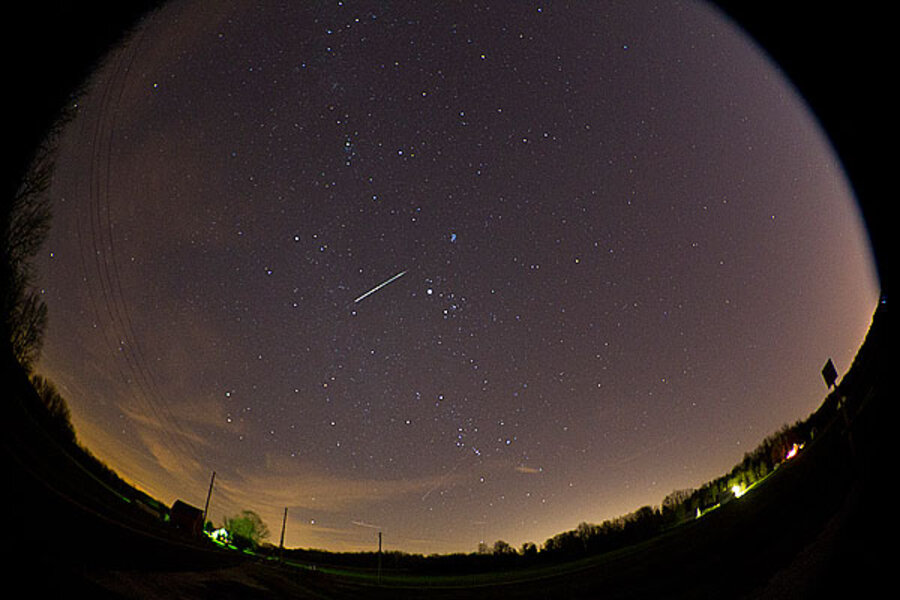Quadrantid meteor shower: Will moon wash out the show?
Loading...
Just when you thought the New Year's fireworks were over, a defunct comet is providing a natural encore.
One of the year's meteoric show stoppers – the Quadrantid meteor shower – peaks overnight Wednesday.
Anyone with the good fortune of living under very dark skies on a moonless night could expect to see as many as 120 meteors an hour when the shower's source region in the sky – or radiant – is directly overhead.
Wednesday, however, the shower will have competition from a moon nearly three-quarters full, so moonlight will mask most of the dimmer bulbs on the shelf. Given the moon's phase, that translates into a rate of between five and 10 meteors an hour visible to people from urban centers through suburbs and into rural areas, according to estimates from the American Meteor Society.
The shower actually spans six days, starting Jan. 1. But this year Earth is encountering the bulk of this cosmic debris in the predawn darkness of Jan. 3.
While other meteor showers typically derive their names from constellations near each shower's radiant, the Quadrantids appear to come from a kind of netherworld between the end of the Big Dipper's handle and the four stars that comprise the head of Draco, the dragon. Astronomers already recognize a meteor shower each October as the Draconids. The Ursids come each December. And it's hard to get excited about something that could have been named the Dippids. So Quadrantids it is. Warning: You can't take that explanation to the bank.
Skywatchers have been observing the Quadrantids at least since 1825.
Somewhere between a short item entitled "Account of the Poison Plants of the Southern Parts of Brazil" and "Professor Buckland's Notice of the Hyaena's Den near Torqay," the Edinbrugh Philosophical Journal informed its readers that "on the 2d of January 1825, about 5 a.m.; Antonio Brucalassi ... observed ... a singular electric phenomenon." He saw what researchers later would refer to as a fireball, with "a great number of shooting stars ... seen before and after the appearance of the meteor." The issue was dated 1826.
Some 14 years after Signore Brucalassi's observation, scientists in the US and Belgium would independently posit that what Brucalassi saw was a recurring event.
In 2003, the shower was pegged to a near-Earth asteroid dubbed 2003 EH1. Using data gathered by the Lowell Observatory's Near-Earth Object Search, Peter Jenniskens, with the SETI Institute in Mountain View, Calif., ran calculations that showed how in the past, the object's closest approach to the sun coincided with Earth's passage through the densest part of the debris – quite like meteors from comets, he noted.
After some additional sleuthing, he suggested that 2003 EH1 was the remnant of comet C1490 Y1, observed in Asia between 1490 and 1491 and that later broke apart.
While this year's Quadrantid shower risks being a relative washout visually, you may be able to snag more meteors on your FM radio. As meteors plummet through the atmosphere and heat to the point of glowing, they leave a streak of ionized gas behind them – briefly. Ionized gases reflect radio signals.
By tuning to a powerful FM station roughly 800 miles away that broadcasts on a quiet part of the FM band where you live, you may be able to pick up the "ping" of a passing meteor. They sound like this. Nothing like Steely Dan, but clearly noticeable. For detailed information on observing meteor showers via radio, try this website.







